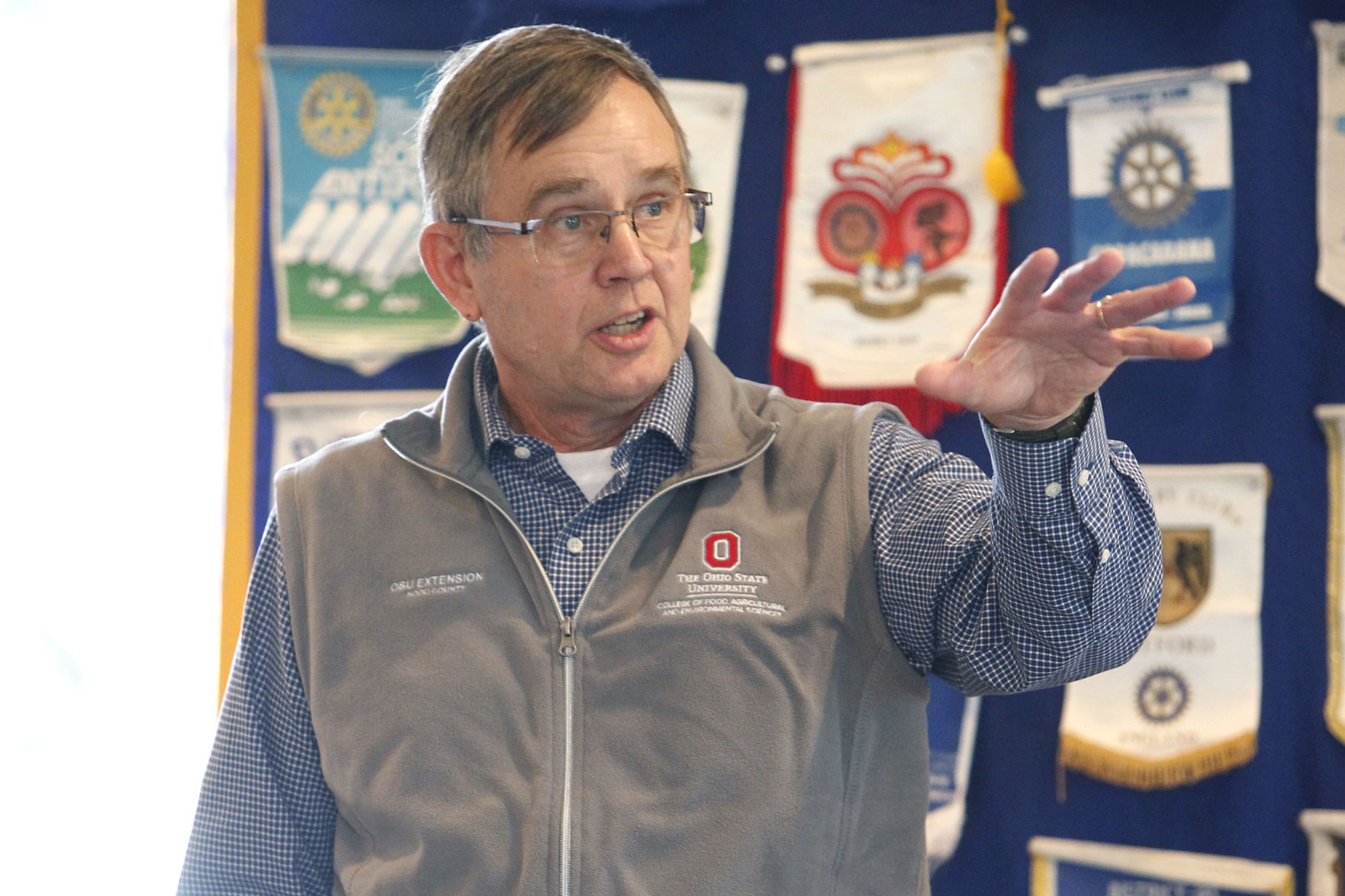
During his presentation to Bowling Green Rotary Club, Alan Sundermeier, the Wood County director of the
Ohio State University Extension office, gave insight on what farmers can do and are doing to minimize
runoff of phosphorous and other contaminants from their farms.
Phosphorous is a major contributor to the algal blooms that threaten safe water in Lake Erie. The
agricultural expert and educator said Thursday his goal was to speak in layman’s terms about the basics
of the issue and how farmers are contributing toward solving the complex problems.
“There’s a lot of stress in farming,” he began.
Sundermeier noted that a few years back, some of the stress was brought about because after some good
yields provided good profits, many area growers reinvested their money in “big new equipment and more
land.”
Neither prices nor yields have maintained the same growth and those bills are still due, causing farmers
the stress of trying to cover all their bases.
“Here in Wood County, we are very fortunate as we have not faced the extreme droughts or other problems
seen around the country,” he said.
Turning to water issues, he gave an overview of some of the causes of the algal blooms.
Sundermeier listed many of the tributaries that contribute water to Lake Erie, explaining that the Maumee
River’s content produces much more agricultural-related runoff because of the extent of the farmland
that empties into that river.
“But it isn’t all agriculture either,” he said. “You contribute when you fertilize your lawns. … You
are part of the problem if you are not careful.”
He also explained the three numbers on lawn fertilization packages are the volumes of nitrogen,
phosphorous and potassium, in that order.
He suggested the use of rain barrels for gutters and drains to capture water from a roof, which could be
used for gardens and landscaping.
Sundermeier said he understands why people are pressing politicians and farmers for quick answers, but
stressed patience is needed.
“It will take 10 years or more of data, including experiencing drought and flooding, to get a good
average. We have to take the time to do proper research,” he said.
The research involves many thousands of water and soil samples.
“It takes a lot of work,” he said. “There is tons of research needed and millions of dollars.”
There are so many variables, including the concentration of the phosphorous in the water runoff, for
example, as well as the flow rate.
He said flow rate is brought about in the most severe cases by severe storms. Sundermeier showed how the
volume of severe storms (defined by two inches of rain or more in a day) have more than doubled over the
last 16 years. He showed how locally it went from eight such events from 1982-1998, to 20 such events
from 1998 to 2014.
More growers are using various drainage water management options, including systems to contain and manage
the water levels in the fields. Beyond mechanical systems, some are also using gypsum and cover crops.
Most of the larger farm operations have implemented the 4R method for nutrient management which stresses
the “right” practices of using the right type of fertilizer, at the right time, in the right amount and
at the right places of the field.
Sundermeier is not among those who believe designating Lake Erie as an impaired watershed will bring more
government funding to help the situation.
“That designation will bring more regulations and layers of bureaucracy to the farmers,” he said.
He indicated it will take more time and more money for the farmers to do and document the same things
they are already doing to protect the water.
“It all starts with healthy soil. Healthy soil produces healthy crops, which produces heathier people,”
he said.
As far as the difference between animal-based manure and commercially produced chemical fertilizers
regarding harm to the lake, Sundermeier stated he believed far more raw manure was getting into the
waterways in the 1950s when there was more livestock in the area and they roamed free. When livestock
would roam into streams, the manure would then be directly deposited into the water. In the larger
megafarms today, the manure is captured and systematically applied to the fields.
There are problems with both types if not handled properly however, Sundermeier said.
“The manure is regulated and I believe is being handled well. We’ve come a long way.”

